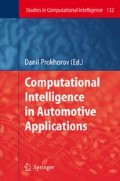Resistance spot welding (RSW) is an important process in the automotive industry. The advantages of spot welding are many: an economical process, adaptable to a wide variety of materials (including low carbon steel, coated steels, stainless steel, aluminum, nickel, titanium, and copper alloys) and thicknesses, a process with short cycle times, and overall, a relatively robust process with some tolerance to fit-up variations. Although used in mass production for several decades, RSW poses several major problems, most notably, large variation in weld quality. Given the variation and uncertainty in weld quality (attributed to factors such as tip wear, sheet metal surface debris, and fluctuations in power supply), it is a common practice in industry to add a significant number of redundant welds to gain confidence in the structural integrity of the welded assembly [1]. In recent years, global competition for improved productivity and reduced nonvalue added activity, is forcing automotive OEMs and others to eliminate these redundant spot welds. The emphasis on reduction of the redundant welds significantly increases the need for monitoring of weld quality and minimizing weld process variability. Traditionally, destructive and nondestructive tests for weld quality evaluation are predominantly off-line or end-of-line processes. While this test information is useful and valuable for quality and process monitoring, it cannot be utilized in process control because of the significant delays that are associated with the off-line test analysis. In order to minimize the number of spot welds and still satisfy essential factors such as strength and surface integrity, weld quality has to be monitored and controlled in real-time. Advances over the last decade in the area of non-intrusive electronic sensors, signal processing algorithms, and computational intelligence, coupled with drastic reductions in computing and networking hardware costs, have now made it possible to develop non-intrusive intelligent resistance welding systems that overcome the above shortcomings.
Access this chapter
Tax calculation will be finalised at checkout
Purchases are for personal use only
Preview
Unable to display preview. Download preview PDF.
References
M. Jou, Real time monitoring weld quality of resistance spot welding for the fabrication of sheet metal assemblies, Journal of Materials Processing Technology, 132, 102–113, 2003.
Y. Nishiwaki and Y. Endo, Resistance welding Controller, W. T. Corporation, Ed. USA, April 10, 2001.
Y. Cho and S. Rhee, New Technology for measuring dynamic resistance and estimating strength in resistance spot welding, Measurement Science & Technology, 11, 1173–1178, 2000.
S. R. Lee, Y. J. Choo, T. Y. Lee, M. H. Kim, and S. K. Choi, A quality assurance technique for resistance spot welding using a neuro-fuzzy algorithm, Journal of Manufacturing Systems,20, pp. 320–328, 2001.
P. Podrzaj, I. Polajnar, J. Diaci, and Z. Kariz, Expulsion detection system for resistance spot welding based on a neural network, Measurement Science & Technology, 15, 592–598, 2004.
Y. Park and H. Cho, Quality evaluation by classification of electrode force patterns in the resistance spot welding process using neural networks, Proceedings of the Institution of Mechanical Engineers, Part B (Journal of Engineering Manufacture), 218, 1513, 2004.
M. El-Banna, D. Filev, and R. B. Chinnam, Online nugget quality classification using LVQ neural network for resistance spot welding, International Journal of Advanced Manufacturing Technology, 36, 237–248, 2008.
T. Kohonen, Improved versions of learning vector quantization. In: (2nd ed.), Proceedings of International Joint Conf. on Neural Networks I, pp. 545–550 San Diego, 1990.
N. T. Williams and J. D. Parker, Review of resistance spot welding of steel sheets Part 2 – Factors influencing electrode life, International Materials Reviews, 49, 77–108, 2004.
N. T. Williams, R. J. Holiday, and J. D. Parker, Current stepping programmes for maximizing electrode campaign life when spot welding coated steels, Science and Technology of Welding and Joining, 3, 286–294, 1998.
R. W. Messler, J. Min, and C. J. Li, An intelligent control system for resistance spot welding using a neural network and fuzzy logic, presented at IEEE Industry Applications Conference, Orlando, FL, USA, Oct. 8–12, 1995.
X. Chen and K. Araki, Fuzzy adaptive process control of resistance spot welding with a current reference model, presented at Proceedings of the IEEE International Conference on Intelligent Processing Systems, ICIPS, Beijing, China, 1998.
S. Lee, Y. Choo, T. Lee, M. Kim, and S. Choi, A quality assurance technique for resistance spot welding using a neuro-fuzzy algorithm, Journal of Manufacturing Systems, 20, 320–328, 2001.
M. El-Banna, D. Filev, and R. B. Chinnam, Intelligent Constant Current Control for Resistance Spot Welding, Proceedings of 2006 IEEE World Congress of Computational Intelligence, 2006 IEEE International Conference on Fuzzy Systems, Vancouver, 1570–1577, 2006.
D. Dickinson, J. Franklin, and A. Stanya, Characterization of Spot-Welding Behavior by Dynamic Electrical Parameter Monitoring, Welding Journal, 59, S170–S176, 1980.
M. Hao, K. A. Osman, D. R. Boomer, C. J. Newton, and P. G. Sheasby, On-line nugget expulsion detection for aluminum spot welding and weldbonding, SAE Transactions Journal of Materials and Manufacturing, 105, 209–218, 1996.
H. Hasegawa and M. Furukawa, Electric Resistance Welding System, U.S Patent 6130369, 2000.
R. R. Yager and D. Filev, Essentials of Fuzzy Modeling & Control. Wiley, New York, 1994.
T. Kohonen, Self-Organization and Associative Memory, 2nd ed., Springer, Berlin Heidelberg New York, 1987.
Author information
Authors and Affiliations
Editor information
Editors and Affiliations
Rights and permissions
Copyright information
© 2008 Springer-Verlag Berlin Heidelberg
About this chapter
Cite this chapter
El-Banna, M., Filev, D., Chinnam, R.B. (2008). Automotive Manufacturing: Intelligent Resistance Welding . In: Prokhorov, D. (eds) Computational Intelligence in Automotive Applications. Studies in Computational Intelligence, vol 132. Springer, Berlin, Heidelberg. https://doi.org/10.1007/978-3-540-79257-4_12
Download citation
DOI: https://doi.org/10.1007/978-3-540-79257-4_12
Publisher Name: Springer, Berlin, Heidelberg
Print ISBN: 978-3-540-79256-7
Online ISBN: 978-3-540-79257-4
eBook Packages: EngineeringEngineering (R0)

